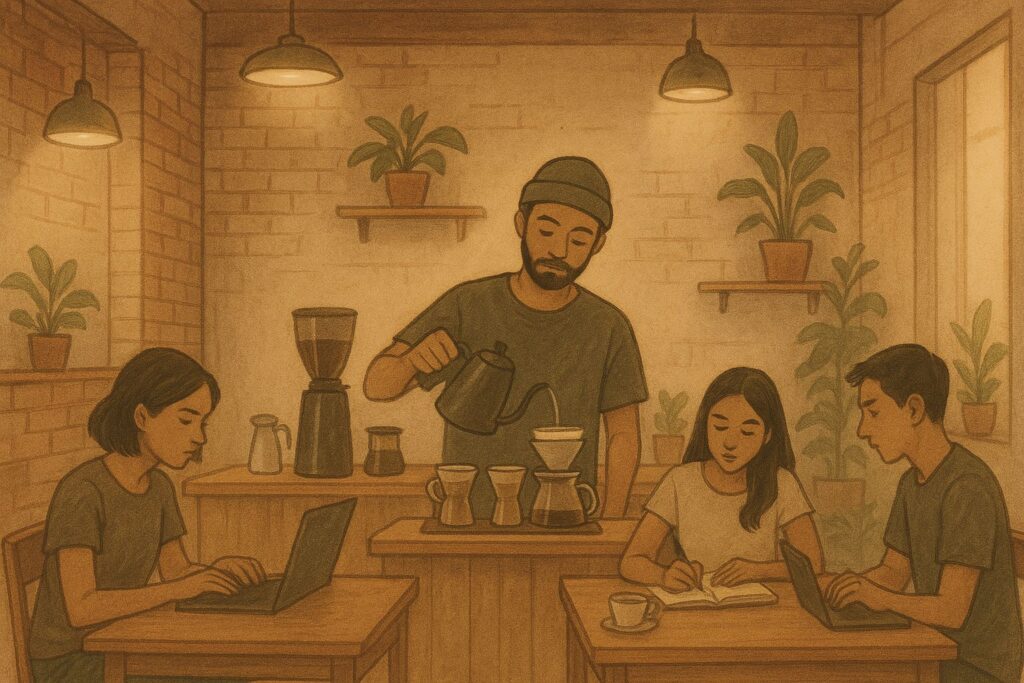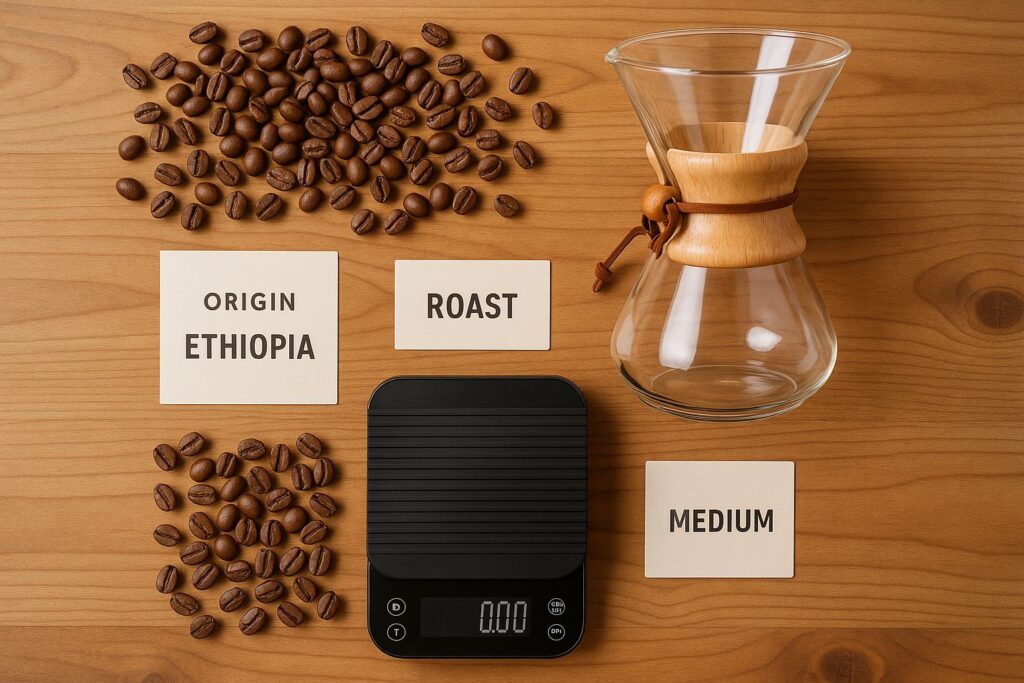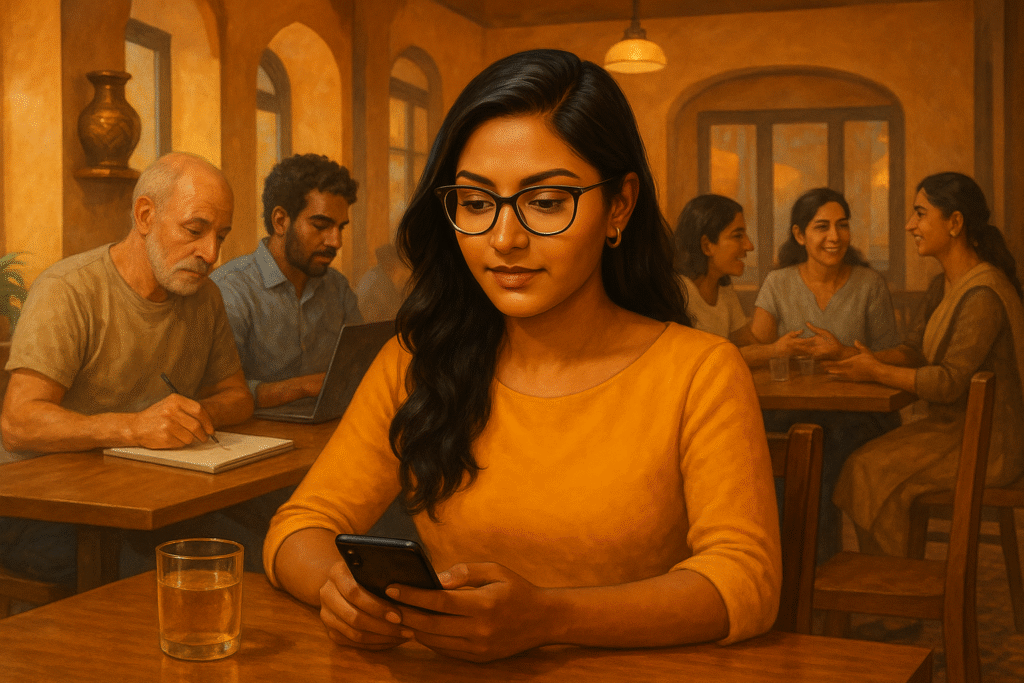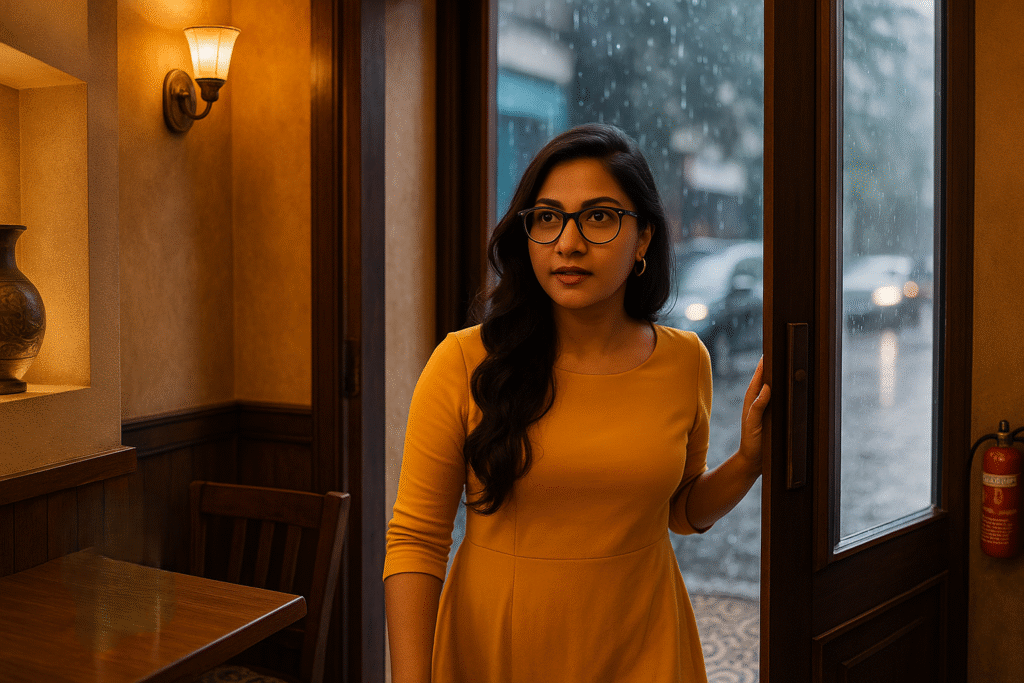The Social Science of Third Wave Cafés: Why They Feel Like Home
Explore the cultural shift of Third Wave Cafés through lifestyle, story, and social psychology. Discover how they’ve reshaped modern coffee culture.

It was tucked away between a florist and a bike repair shop. No signboard, no catchy logo — just the scent of dark roast beans drifting down the alley. I remember stepping into that Third Wave Café on a rainy Tuesday afternoon with no expectations in Goa.
Inside, it was all woodgrain and warm light. Vinyl records spun softly in the corner. The barista greeted me like a friend. And the coffee — oh, the coffee — didn’t taste like fuel. It tasted like fruit, like soil, like something that had traveled a long way just to meet me here.
But what struck me most wasn’t just the drink. It was the mood. Everyone was either deep in thought, lost in conversation, or writing the next great indie novel.
This wasn’t just a place to grab coffee. It was a portal — to creativity, to slowness, to humanity. I didn’t realize it then, but I’d entered the world of Third Wave Cafés — and I’d never see coffee culture the same way again.
What Is a Third Wave Café?

A Third Wave Café isn’t just a coffee shop — it’s a philosophy brewed into your cup.
The “third wave” refers to a movement in coffee culture that values transparency, craftsmanship, and connection. Think of it like farm-to-table — but for your latte. It’s not about branding or mass production. It’s about knowing where your beans come from, how they were roasted, and who poured your cup.
In contrast to first wave (mass-market coffee like Folgers) and second wave (chains like Starbucks), third wave shops treat coffee like an artisanal craft. The emphasis is on quality over quantity, experience over efficiency.
But more than that, these cafés are curated to invite mindfulness. Minimalist interiors. No blaring pop music. Baristas who know your name — and maybe your favorite poem.
It’s not a trend — it’s a cultural shift. And once you’ve had your first pour-over brewed with intention, it’s hard to go back to drive-thru coffee.
Social Science Angle: Why These Cafés Feel Different

What makes a Third Wave Café feel so… different?
Sociologists and environmental psychologists have studied this. The answer isn’t just the beans — it’s the intentional design of third places. Coined by sociologist Ray Oldenburg, a “third place” is somewhere that isn’t home (first place) or work (second place), but exists purely for community, comfort, and conversation.
Third wave cafés are the new third places.
They’re built to slow you down. Soft lighting, communal tables, Wi-Fi that encourages productivity without numbing you into isolation. These spaces are designed to foster micro-interactions — a head nod to the guy next to you, a smile from the barista, a compliment on your notebook.
Research shows these subtle social exchanges significantly boost mental health and feelings of belonging. When you choose a Third Wave Café over your kitchen counter, you’re not just buying coffee — you’re investing in your emotional well-being.
Coffee culture has become culture, and these cafés are now modern sanctuaries for connection, creative flow, and curated presence.
The Lifestyle Impact: More Than Just Coffee

The rise of the coffee lifestyle isn’t just about caffeine anymore. It’s about ritual, rhythm, and environment.
In Third Wave Cafés, you don’t chug your drink. You sip. You savor. You maybe even journal or sketch or just stare out the window. These spots have become unofficial headquarters for freelancers, students, startup founders, and wanderers of all kinds.
And that’s not by accident. The coffee rituals crafted here — from slow brews to latte art — are about presence. They make the mundane magical. Even ordering a cup feels intentional.
I’ve watched relationships begin over oat cappuccinos. I’ve seen someone cry into a Chemex and another start their novel beside a matcha. This is the power of space designed for pause.
Your local Third Wave Café isn’t just part of your routine. It’s shaping your identity. And that? That’s worth sitting down for.
How Third Wave Cafés Influence Connection & Creativity

When you strip away the pressure to “grab and go,” you make space for something beautiful: connection.
At my favorite Third Wave Café, I’ve met artists, retirees, travelers, and couples on their third date. Conversations bloom organically — about beans, yes, but also about books, beliefs, business, and broken hearts.
These cafés cultivate vulnerability. You’re not just buying a drink — you’re buying a moment. And that moment can spark an idea, a project, a relationship.
Studies show that ambient noise at 70 decibels — the typical hum of a café — is the ideal backdrop for creative thinking. That explains why so many of us write better, think clearer, and feel more inspired here.
Creativity thrives in comfort. And connection blooms where intention lives. A Third Wave Café gives you both.
Final Sip

The world will always have coffee shops. But not all of them offer what a Third Wave Café does.
These are more than spaces. They’re sanctuaries for the soul. For those who live the coffee lifestyle, they’re extensions of home. Places where you’re both alone and surrounded. Where the cup you hold warms your hand and, somehow, your hope.
In a time of endless scrolls and digital overload, these cafés bring us back to something analog, something tactile. Something real.
So next time you pass one — the kind with no sign, just the scent — step inside. Sit down. Look around. You may not leave with just a caffeine buzz, but with a story, an idea, or even a friend.
Because when coffee is made with care, and space is designed with heart — everything changes.
